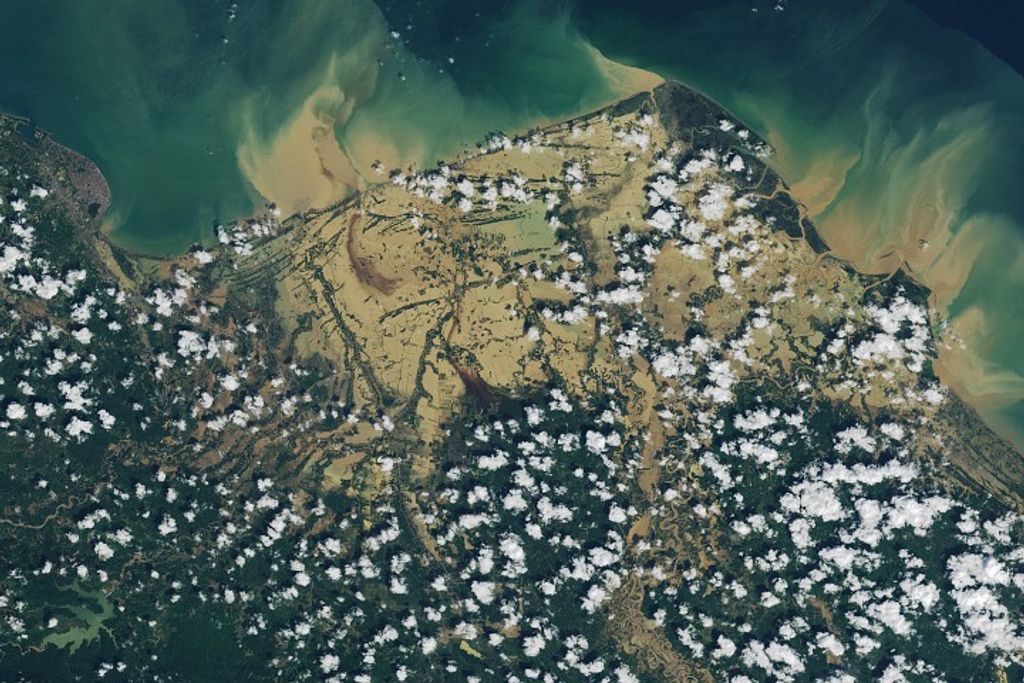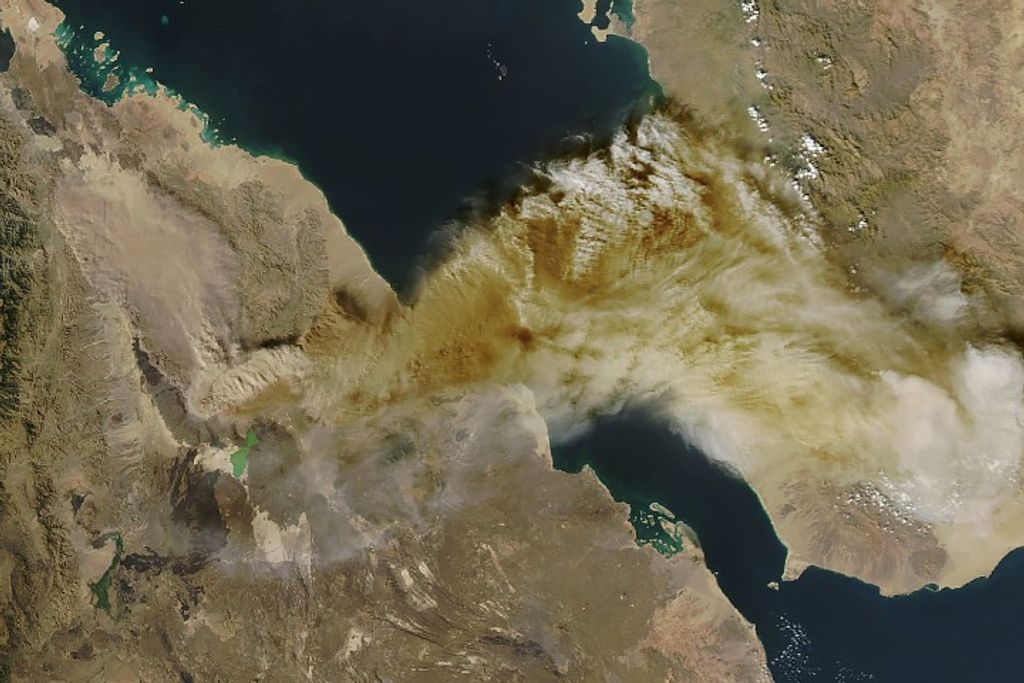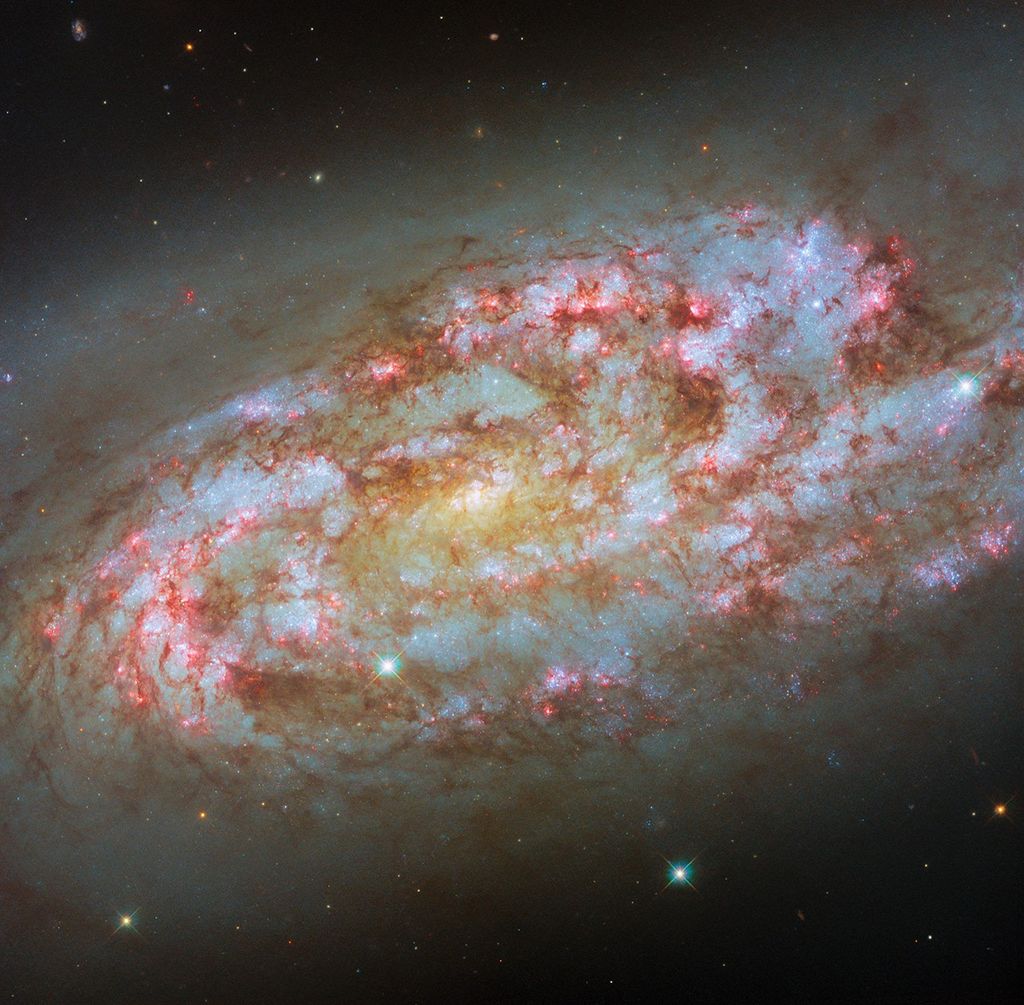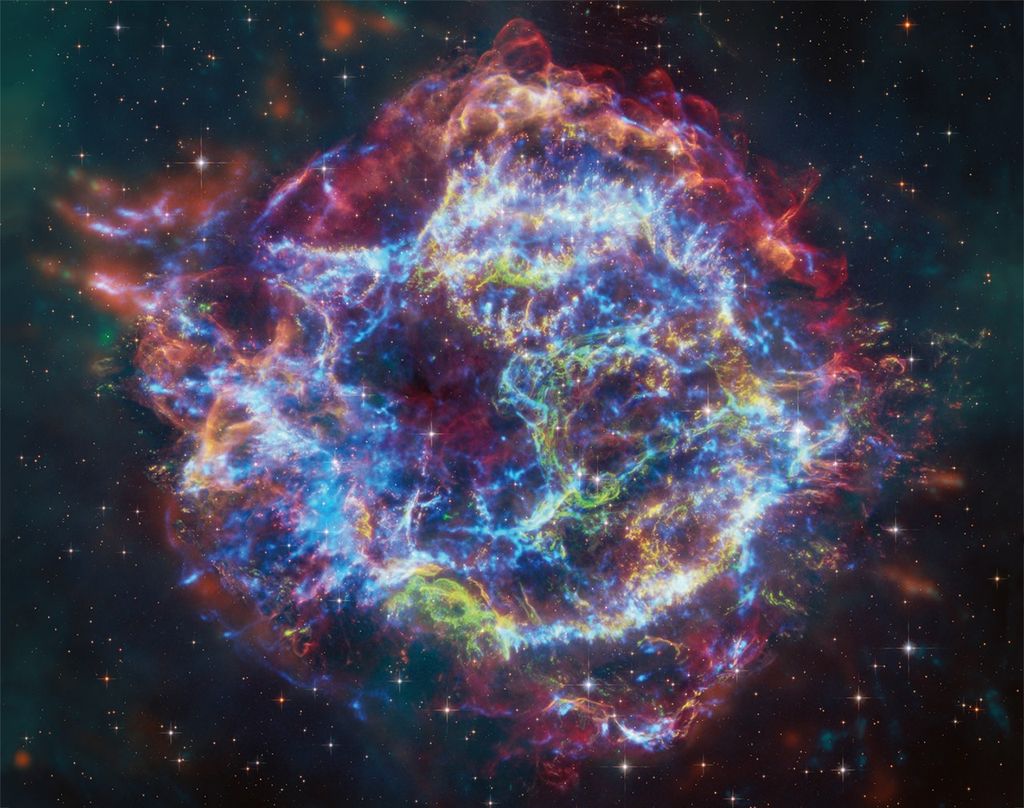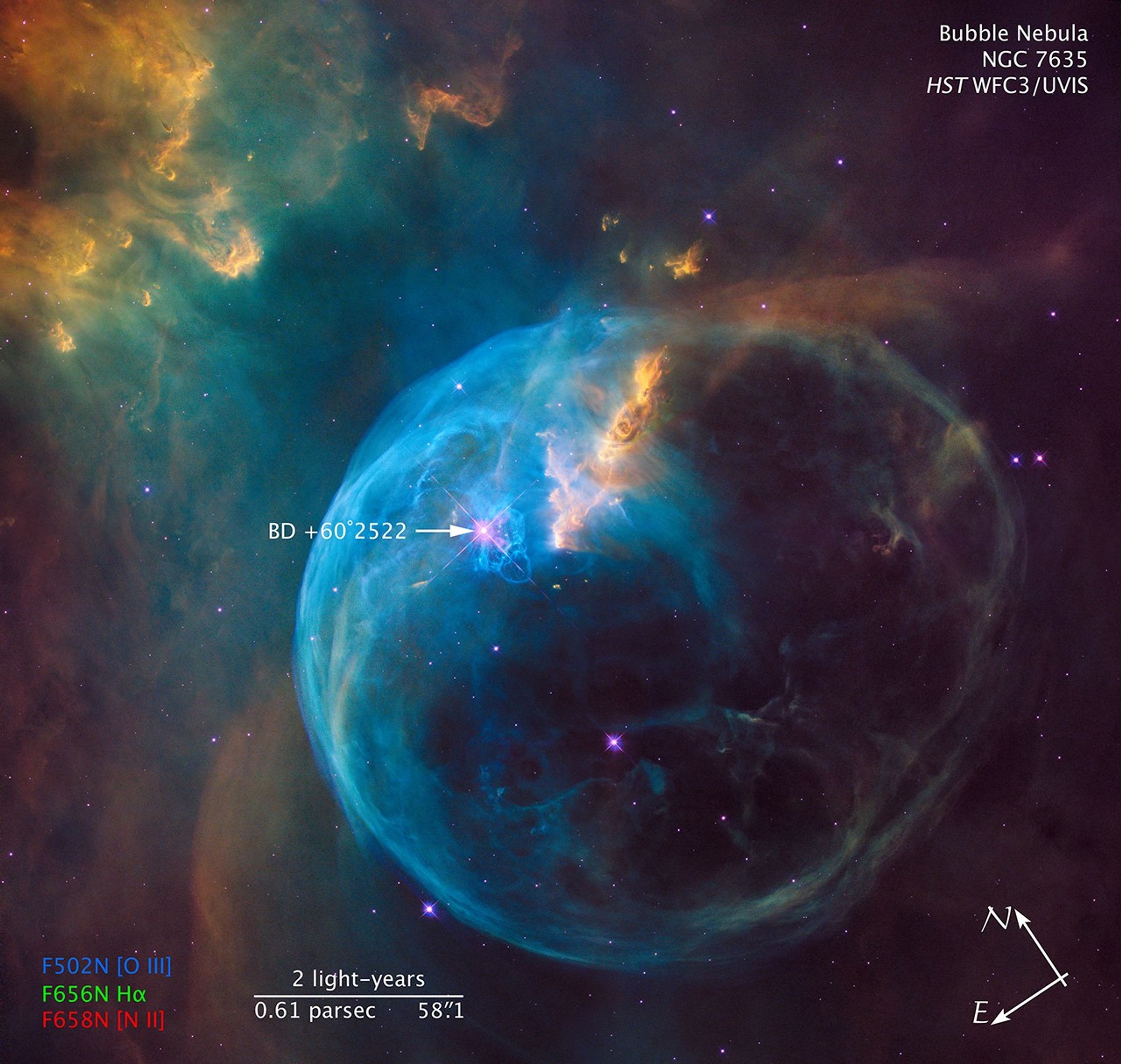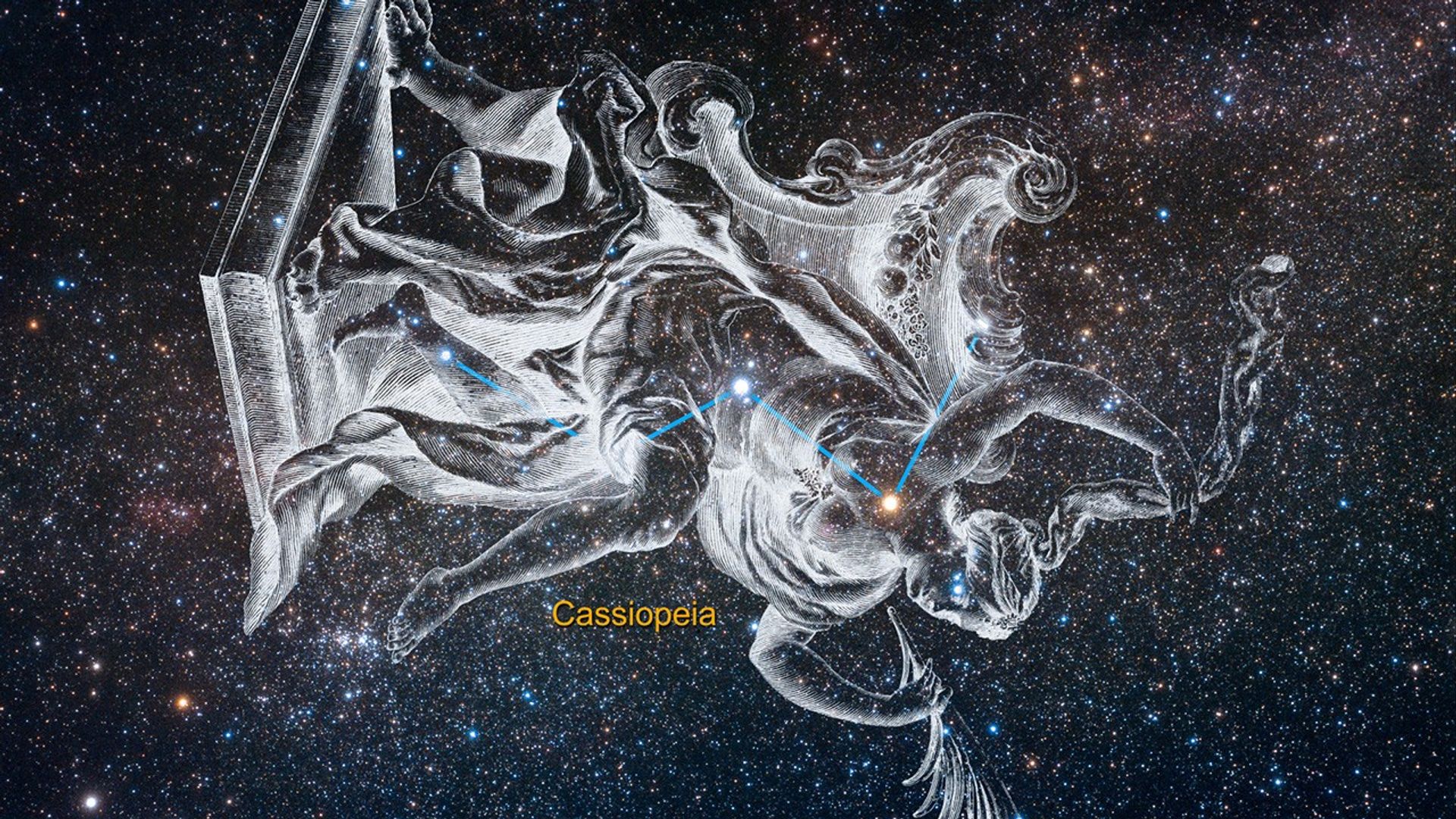1 min read
Bubble Nebula (NGC 7635)

For the 26th birthday of NASA's Hubble Space Telescope, astronomers are highlighting a Hubble image of an enormous bubble being blown into space by a super-hot, massive star. The Hubble image of the Bubble Nebula, or NGC 7635, was chosen to mark the 26th anniversary of the launch of Hubble into Earth orbit by the STS-31 space shuttle crew on April 24, 1990.
"As Hubble makes its 26th revolution around our home star, the sun, we celebrate the event with a spectacular image of a dynamic and exciting interaction of a young star with its environment. The view of the Bubble Nebula, crafted from Wide Field Camera 3 images, reminds us that Hubble gives us a front-row seat to the awe-inspiring universe we live in," said John Grunsfeld, astronaut and associate administrator of NASA's Science Mission Directorate at NASA Headquarters, in Washington, D.C.
The Bubble Nebula is 7 light-years across – about one-and-a-half times the distance from our sun to its nearest stellar neighbor, Alpha Centauri – and resides 7,100 light-years from Earth in the constellation Cassiopeia.
The seething star forming this nebula is 45 times more massive than our sun. Gas on the star gets so hot that it escapes away into space as a "stellar wind" moving at over 4 million miles per hour. This outflow sweeps up the cold, interstellar gas in front of it, forming the outer edge of the bubble much like a snowplow piles up snow in front of it as it moves forward.
As the surface of the bubble's shell expands outward, it slams into dense regions of cold gas on one side of the bubble. This asymmetry makes the star appear dramatically off-center from the bubble, with its location in the 10 o'clock position in the Hubble view.
Dense pillars of cool hydrogen gas laced with dust appear at the upper left of the picture, and more "fingers" can be seen nearly face-on, behind the translucent bubble.
The gases heated to varying temperatures emit different colors: oxygen is hot enough to emit blue light in the bubble near the star, while the cooler pillars are yellow from the combined light of hydrogen and nitrogen. The pillars are similar to the iconic columns in the "Pillars of Creation" in the Eagle Nebula. As seen with the structures in the Eagle Nebula, the Bubble Nebula pillars are being illuminated by the strong ultraviolet radiation from the brilliant star inside the bubble.
The Bubble Nebula was discovered in 1787 by William Herschel, a prominent British astronomer. It is being formed by an O star, BD +60°2522, an extremely bright, massive, and short-lived star that has lost most of its outer hydrogen and is now fusing helium into heavier elements. The star is about 4 million years old, and in 10 million to 20 million years, it will likely detonate as a supernova.
Hubble's Wide Field Camera 3 imaged the nebula in visible light with unprecedented clarity in February 2016. The colors correspond to blue for oxygen, green for hydrogen, and red for nitrogen. This information will help astronomers understand the geometry and dynamics of this complex system.
The Bubble Nebula is one of only a handful of astronomical objects that have been observed with several different instruments onboard Hubble. Hubble also imaged it with the Wide Field Planetary Camera (WFPC) in September of 1992, and with Wide Field Planetary Camera 2 (WFPC2) in April of 1999.
About the Object
- R.A. PositionR.A. PositionRight ascension – analogous to longitude – is one component of an object's position.23h 20m 48.3s
- Dec. PositionDec. PositionDeclination – analogous to latitude – is one component of an object's position.61° 12' 6.12"
- ConstellationConstellationOne of 88 recognized regions of the celestial sphere in which the object appears.Cassiopeia
- DistanceDistanceThe physical distance from Earth to the astronomical object. Distances within our solar system are usually measured in Astronomical Units (AU). Distances between stars are usually measured in light-years. Interstellar distances can also be measured in parsecs.7,100 light-years (2,100 parsecs)
About the Data
- Data DescriptionData DescriptionProposal: A description of the observations, their scientific justification, and the links to the data available in the science archive.
Science Team: The astronomers who planned the observations and analyzed the data. "PI" refers to the Principal Investigator.Data were provided by the HST proposal 14471 taken by the Hubble Heritage Team: Z. Levay, R. Avila, C. Christian, L. Frattare, J. Green, J. Mack, C. Martlin, S. Meyett, M. Mutchler, and S. Porter (STScI/AURA), and K. Noll (NASA/GSFC). - InstrumentInstrumentThe science instrument used to produce the data.HST>WFC3/UVIS
- Exposure DatesExposure DatesThe date(s) that the telescope made its observations and the total exposure time.February 25/26, 2016, Exposure Time: 3.5 hours
- FiltersFiltersThe camera filters that were used in the science observations.F502N ([O III]), F656N (H-alpha), and F658N ([N II])
- Object NameObject NameA name or catalog number that astronomers use to identify an astronomical object.NGC 7635, Bubble Nebula (WFC3)
- Object DescriptionObject DescriptionThe type of astronomical object.Emission nebula, O 6.5 Star
- Release DateApril 21, 2016
- Science ReleaseHubble Sees a Star ‘Inflating’ a Giant Bubble
- CreditNASA, ESA, and the Hubble Heritage Team (STScI/AURA)

This image is a composite of separate exposures acquired by the WFC3/UVIS instrument. Several filters were used to sample various wavelengths. The color results from assigning different hues (colors) to each monochromatic (grayscale) image associated with an individual filter. In this case, the assigned colors are: Blue: F502N ([O III]) Green: F656N (H-alpha) Red: F658N ([N II])

Related Images & Videos
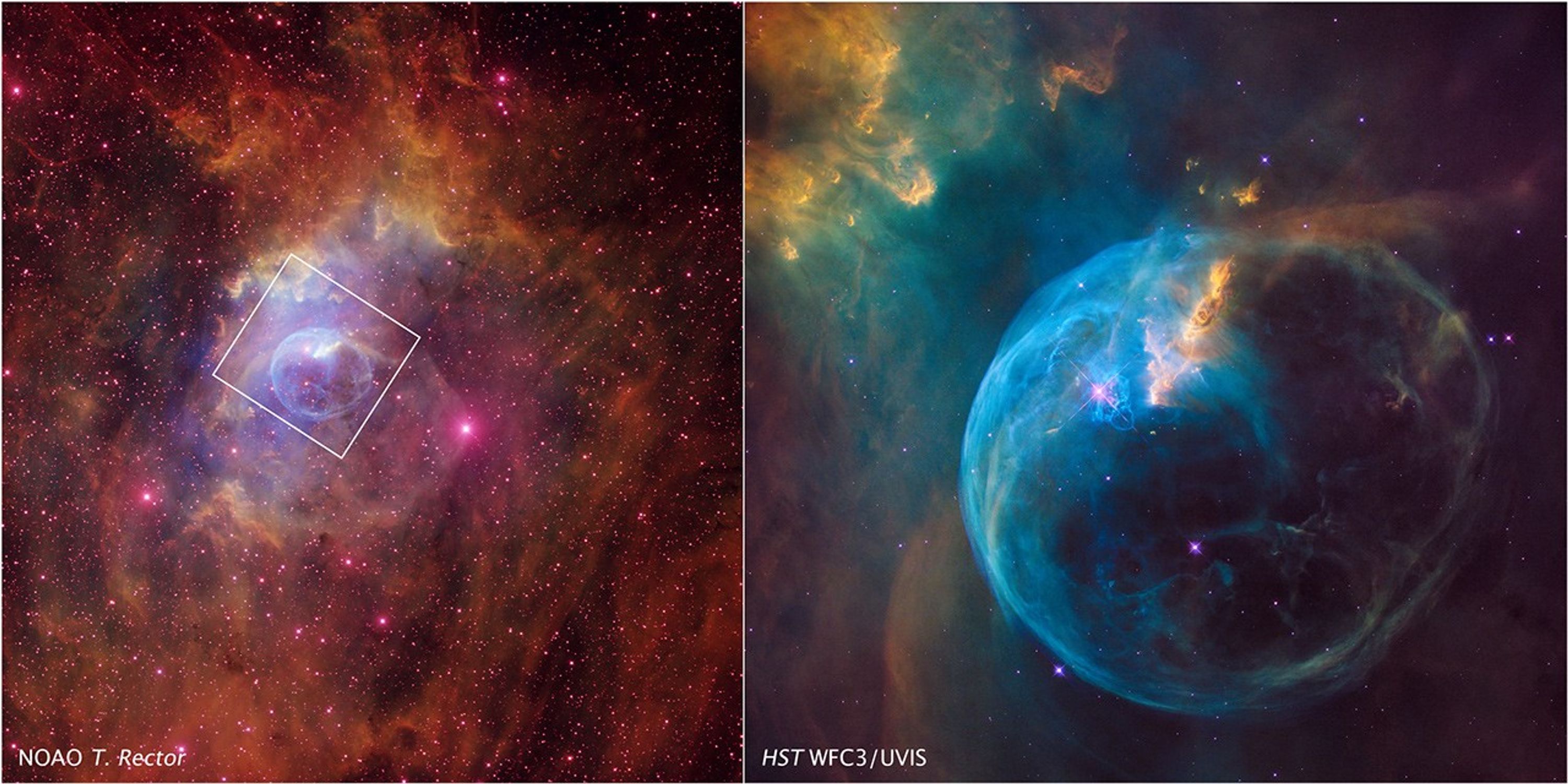
Ground-based Field of View and Location of the Bubble Nebula
This graphic shows the wider context of the Bubble Nebula. The National Optical Astronomy Observatory (NOAO) image (left) by Travis Rector has been rotated and cropped to be north-up and closer to the orientation of the Hubble Space Telescope image (right). In addition to the...
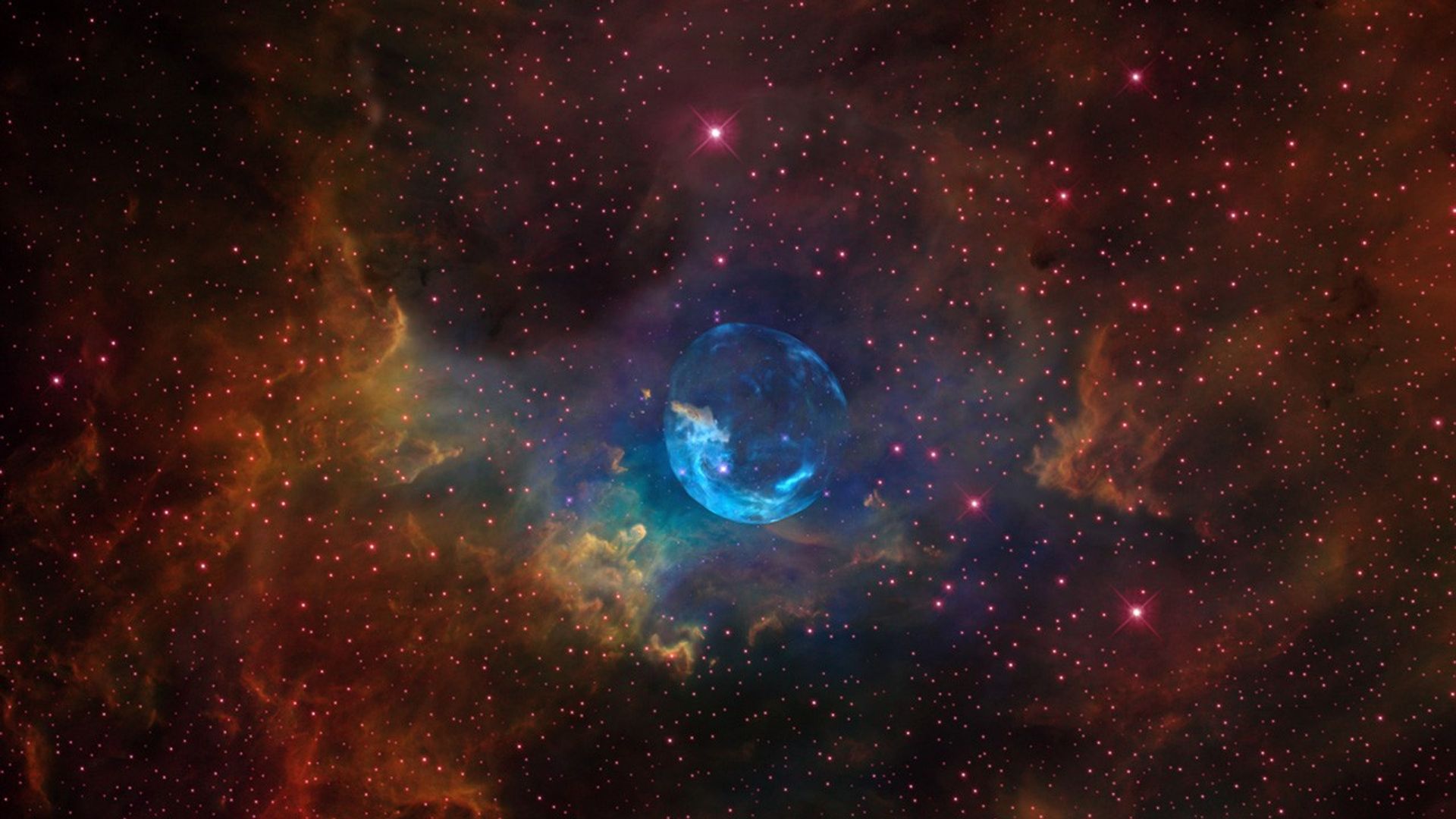
Animation Approaching the Bubble Nebula
This visualization of the Bubble Nebula begins with a ground-based view that encompasses the glowing cloud. The high-energy light from the Wolf-Rayet star, BD +60°2522, is responsible for ionizing the entire region. The virtual camera flies through the foreground stars and...
Share
Details
Claire Andreoli
NASA’s Goddard Space Flight Center
Greenbelt, Maryland
claire.andreoli@nasa.gov








